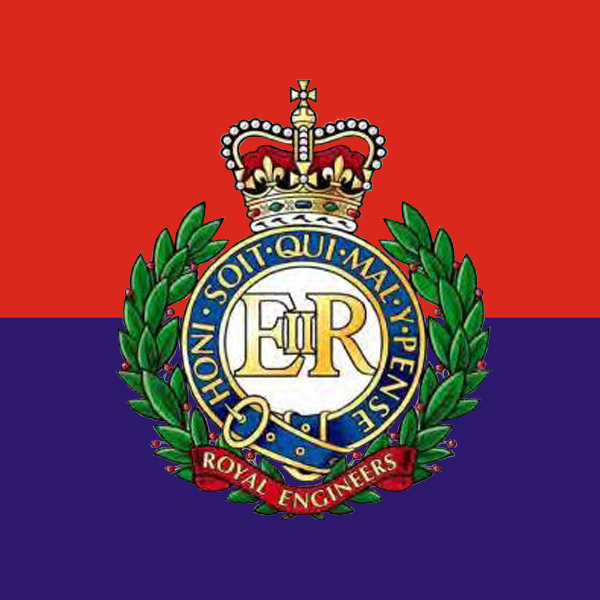Postal & Courier Services Branch of the Royal Engineers
An Army Post Office Corps was raised in 1882, which became the Royal Engineers (Postal Section) in 1913. Today Defence Postal & Courier Services are the responsibility of The Royal Logistic Corps

Motto: Swift and Secure
March: Wings
Colours: Blue and Red
The origins of the British military postal services are to be found in the King’s Messengers of the Middle Ages. In the 18th and 19th centuries Post Office Clerks were seconded to the Army to act as Army Postmasters to Expeditionary Forces deployed overseas. Since the First World World the Royal Engineers (Postal Section) and its successors have served in all conflicts.
THE POSTAL & COURIER SERVICES OF THE ROYAL ENGINEERS
1795: One penny postage concession granted to soldiers and sailors.
1799: Henry Darlot of the General Post Office (GPO) appointed Army Post Master for the Helder Expedition.
1868: Lieutenant Colonel Du Plat Taylor raised 49th (later 24th) Middlesex Rifle Volunteers from General Post Office employees.
1877: A War Office Committee recommends the raising of a Postal Corps.
1882: Army Post Office Corps (APOC) raised from M Company 24th Middlesex Rifle Volunteers, for service in Egypt. Army Post Office Corps become the first Volunteers to be awarded a Battle Honour ‘Egypt 1882’. They subsequently served in Suakin (1885) and the Second South African War (1899-1902)
1913: Army Post Office Corps forms the Royal Engineers (Postal Section), Special Reserve
1917: Postal trained women of the Women’s Army Auxiliary Corps (WAAC) employed at the Base Army Post Offices in France until 1919.
1919: Pioneers (with RAF) of international airmail services when a scheduled airmail service was inaugurated between Folkstone and Cologne to carry mail for troops serving in British Army of the Rhine (BAOR).
1940: Women of the Auxiliary Territorial Service (ATS) take on postal duties at the Home Postal Depot. They remained with Royal Engineers (Postal Section) until 1947.
1941: Royal Engineers (Postal Section) introduces the Airgraph and Air Letter Form to speed the transit time of mail, the latter being the fore runner of the “bluey”.
1952: Women of the Women’s Royal Army Corps (WRAC) commence postal duties at the Home Postal Depot, Knightsbridge, London. The responsibly for the carriage of classified mail (courier) transferred from the Royal Signals to the Royal Engineers (Postal Section).
1957: The BFPO no address system was introduced worldwide.
1959: Royal Engineers (Postal Section) becomes part of the Regular cadre of the British Army.
1962: Royal Engineers (Postal Section) takes over responsibility from the General Post Office for the Royal Navy’s mail.
1965: Royal Engineers (Postal Section) re-designated Royal Engineers (Postal & Courier Communications).
1966: Royal Engineers (Postal & Courier Communications) (RE (PCC)) develop a method of air delivery of mail to HM Ships at sea.
1979: Royal Engineers (Postal & Courier Communications) restyled Royal Engineers (Postal & Courier Services)
1988: Postal & Courier Depot RE, Mill Hill bombed by the IRA killing one soldier and injuring nine others.
1992: Royal Engineers (Postal & Courier Services) (RE (PCS)) becomes a Defence Agency and Postal & Courier trained WRAC are re-capbadged as Royal Engineers.
1993: Royal Engineers (Postal & Courier Services) becomes a founding member of the Royal Logistics Corps.
There is a Royal Engineers Association (Postal & Courier Services Branch) more details can be found on their website at https://pcsbranch.org.uk
General Enquiries:
Telephone: +44(0)1634 847005
Email: info@reahq.org.uk

See What The RLC Has Been Up To
The Royal Logistic Corps
The Royal Logistic Corps
The Royal Logistic Corps